May-2015
The community of Tatajuba (Ceará state)
You need help to see the surroundings of Tatajuba, like in the Eduardo Galeano story in which a boy, upon looking at the sea for the first time, asks his father, “help me to see.”
The natural exuberance calls for silence while looking, calls for a new way of seeing, a child’s eye, of those who see things with wonder for the first time.
Therefore, to attempt to describe this landscape is an injustice to reality; it would disturb this silence too much. Only if you’re a poet can you try to describe without offending these images.
Tatajuba or more specifically, Nova Tatajuba, is just one of four communities in this part of Brazil where you can see the sun set over the ocean.
The sand dunes, which attract the tourists, are dreaded by the local residents. It is the dunes that define where it is possible to live, grow plants and raise animals. It was the dunes that dismembered the old community, covering houses, plantations, the school and church, forcing its inhabitants to create four new villages: Nova Tatajuba, Vila São Francisco, Vila Nova and Baixa Tatajuba.
People who lived here in the 70s look around with disdain at these sands. They pulled what they could from their houses, like shingles, timber, some furniture and, in an effort to stay in the land they were born, rebuilt their lives in areas a little more removed from the dunes.
Today they face the threat of having to leave this place but this time not because of the dunes, but because of the human greed of large companies and tourist enterprises. They are in a big judicial battle to stay in their houses and the land on which they were born.
Each of the four communities has between 500 and 900 people, with Nova Tatajuba being the largest. The school here goes up to the ninth grade, the health post has the only doctor in the region, and there are also some tourist installations. We settled in Nova Tatajuba and are being warmly received by everyone, the adults as well as the children.
The games rise early here, around 7 a.m., since by 9 a.m. it’s a good idea to be back under a roof or the shade of a tree, otherwise the sun melts us, melts our photographic equipment, melts our movements and, most of all, our ideas. The power of this heat is incredible. You only start to move again around 4 p.m., when everyone restarts their day and leave the house again.
Nighttime is a gently breezed joy, great for screening our films in the square, using the church stairs as stands and our car as a screen. The moonlight feeds our conversations after the films and the exchange in knowledge between us.
Text: Renata Meirelles
Photos: Google Earth, David Reeks, and Renata Meirelles
. 0



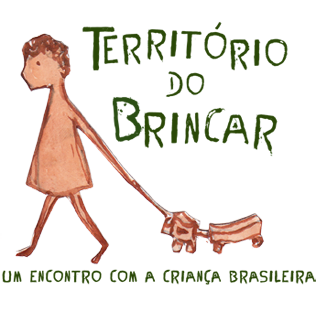
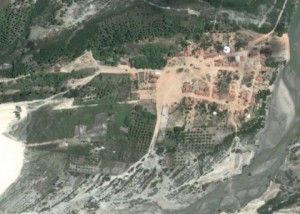
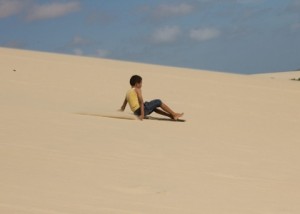
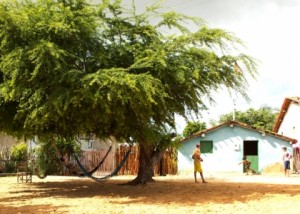
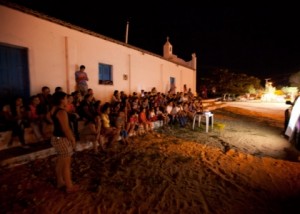


Leave a Reply